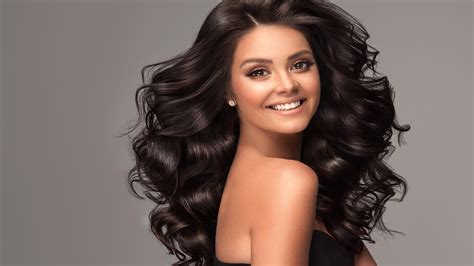If you’re yearning for thicker, longer locks but struggle with fine, limp hair, a weave may be the transformative solution you’ve been seeking. By attaching human or synthetic hair extensions to your natural strands, you can create the illusion of fullness and volume, instantly elevating your hairstyle. However, selecting the best weave for fine hair requires careful consideration to ensure a seamless and natural-looking finish.

Understanding Fine Hair and the Challenges
Fine hair is characterized by a smaller diameter of individual strands, resulting in less volume and a predisposition to breakage. According to the American Academy of Dermatology, 45% of women in the United States have fine hair, highlighting the prevalence of this hair type.
The challenges associated with fine hair include:
- Lack of volume
- Tendency to become oily quickly
- Susceptibility to breakage
- Difficulty holding curls or styles
Types of Weaves for Fine Hair
Numerous types of weaves are available, each offering distinct benefits and techniques. Tailoring the weave to the specific needs and condition of fine hair is crucial to achieve optimal results.
Machine-Sewn Weaves
- Pros: Durable and long-lasting; provides excellent coverage and fullness.
- Cons: Requires expert installation; can be heavy on fine hair; may cause tension or breakage.
Hand-Tied Weaves
- Pros: Gentle on hair; creates a more natural look; allows for greater customization.
- Cons: Time-consuming to install; requires regular maintenance; may be less durable than machine-sewn weaves.
Tape-In Weaves
- Pros: Easy to apply and remove; less damaging to hair; suitable for short hair.
- Cons: May not provide the same level of coverage as other weaves; requires regular re-taping.
Clip-In Weaves
- Pros: Convenient and temporary solution; easy to apply and remove at home; no professional installation required.
- Cons: Limited thickness and coverage; may be visible or bulky on fine hair.
Choosing the Best Weave
When selecting the best weave for fine hair, consider the following factors:
- Hair type (e.g., fine, brittle, or color-treated)
- Desired length and fullness
- Budget
- Maintenance preferences
Common Mistakes to Avoid
- Using heavy or thick extensions: This can overburden fine hair, leading to breakage.
- Opting for weaves that require tight tension: This can damage hair follicles and cause hair loss.
- Skipping regular maintenance: Weaves require periodic tightening, cleaning, and conditioning to maintain their integrity.
- Ignoring the condition of natural hair: Fine hair requires extra care to avoid damage from extensions.
Why Hair Weaves Matter
Weaves provide numerous benefits for those with fine hair, including:
- Enhanced volume and fullness: Weaves create the illusion of thicker, fuller locks without damaging natural hair.
- Lengthening: Weaves can extend hair to any desired length, allowing for diverse styling options.
- Color transformation: Weaves offer a temporary and versatile way to change hair color without committing to permanent dyes.
- Protection: Weaves can shield natural hair from environmental stressors, such as sun damage and pollution.
Conclusion
Embracing a weave can transform fine hair from flat and lifeless to voluminous and captivating. By selecting the best weave for your specific hair type and needs, you can achieve the coveted thickness, length, and style you desire. Remember, proper installation, maintenance, and care are essential to ensure a seamless and enjoyable experience with hair weaves.
